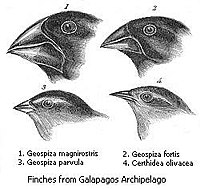
Photo from wikipedia
Feeding upon the scales of other fish—lepidophagy—is a highly specialized foraging strategy in fish. Scale-eating is rare in teleosts, yet has evolved several times in East African cichlids, the most… Click to show full abstract
Feeding upon the scales of other fish—lepidophagy—is a highly specialized foraging strategy in fish. Scale-eating is rare in teleosts, yet has evolved several times in East African cichlids, the most famous case being the Perissodini clade in Lake Tanganyika. Here, we examined the prey spectrum of the scale-eater Perissodus microlepis (Boulenger, 1898) via morphological assessment and targeted sequencing (barcoding) of ingested scales. We found that the size of the ingested scales, but not their number, correlates with the body size of scale-eaters. Sequencing of a segment of the mitochondrial ND2 gene in more than 300 scales revealed that P. microlepis feed upon a broad spectrum of prey species. In total, we detected 39 different prey species, reflecting the cichlid community in the rocky littoral zone of Lake Tanganyika. The most common prey were the algae-eaters Petrochromis polyodon, Pe. ephippium, Eretmodus cyanostictus, Tropheus moorii, and Simochromis diagramma, which make up more than half of the diet. The diversity of scales found within scale-eaters and the overall broad prey spectrum suggest that P. microlepis is an opportunistic feeder. Mouth-handedness and body color hue of the scale-eaters do not seem to have an influence on prey choice.
Journal Title: Hydrobiologia
Year Published: 2018
Link to full text (if available)
Share on Social Media: Sign Up to like & get
recommendations!